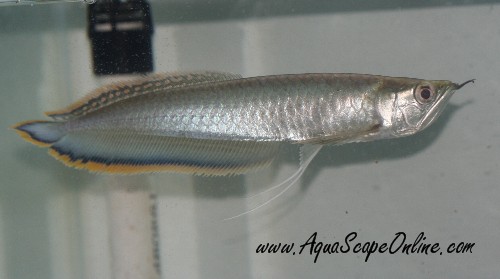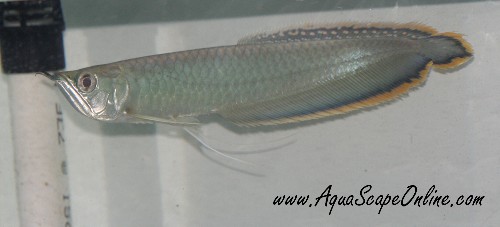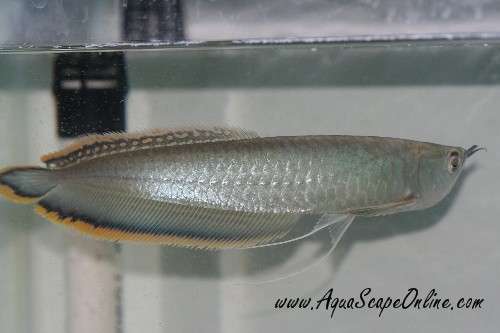Origin Amazon River basin and Guyana
Maximum Size: Over 36" - 80cm
Care: Arowanas need the best of water conditions to ensure the best coloration and finnage.

Feeding: Be sure to provide a variety of foods, as this is essential for the arowanas diet; arowanas are usually fed live fish such as guppies or goldfish, if at all possible grow the fish up on arrowana sticks. To supplement instead of live fish you can try beef heart which has the nutrients but lacks the diseases which are so common in feeders. A nutritious, complete diet will enhance their colors and ensure good health, you should also note that they will eat almost any fish they can fit in their mouth!

Breeding: Arowanas are not particularily hard to breed, all you need is a large tank and a pair. The easiest way to obtain a pair is to raise a group of young arowans together together. When spawning, they swim around in circles and the female will lay her orange eggs, about the size of 8-12mm and then the male will fertilize them. The quantity of eggs laid range from anywhere between 50-250. The newly hatched young stay in their parent's mouth for over a month before they become independent and being released at a size of about 1.5" or 3-4cm
Sexing: The only sure time for determining the sex of the arowanas is when a pair is formed and starts to breed - the arowana is a mouthbrooder that spawns and raises its young in pairs. A mature fish is at least 3-4 years old and usually a pair is formed out of a group of fishes raised together.

Comments: Arowanas are known to be quite skittish as far as fish go. They get scared very easily. In the wild this fish survives by jumping for its food which includes insects and small birds as a result of this your tank must be kept covered at all times and even weighted down as the fish grows or else you will come home and find your arowana on the floor...